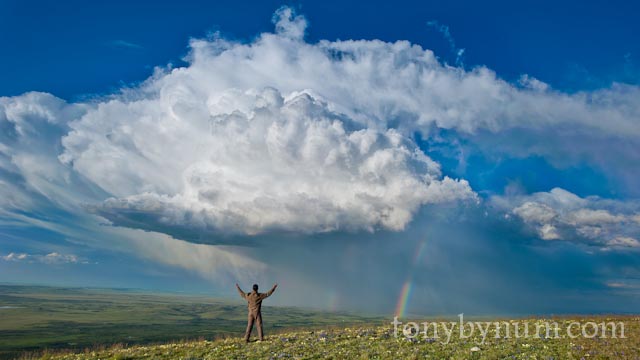Tony Bynum - Montana Conservation Photography - Interview
Historically, policies and perceptions were changed by photographs, but that’s not enough. It combines a business and a service with intent. I intend to help things, not make things worse, dilapidated, or go backwards.
A herd bull elk with his harem in a recent burn. © Tony Bynum
Tony Bynum, the Montana-based Conservation Photographer, was please to talk to Wild Montana’s new Communications Director about conservation and conservation photography. Read the full interview with Tony Bynum and Sarah Ryan of Wild Montana (formerly Montana Wilderness Association) at the Tony Bynum Interview link below.
#OurWild - My Story for Protecting Public Lands
#OURWILD
The #ourwild campaign is about real people telling their public lands stories. This #ourwild video, produced by The Wilderness Society, is part of my public land story. I'm a father. I'm a hunter. I'm a photographer, friend and advocate for keeping the public domain in public hands. I am firmly against selling, or trading the public domain to the states. I'm not a preservationist, I'm a conservationist, which means I believe in using the natural resources, not locking them up. I also believe some places should be off limits to extraction. I'm for sensible, reasoned, and smart use of our public resources.
As a hunter and photographer, I support hunter education in the form of learning the history of conservation in America, in addition to how to be safe with a gun. For example, in order to bow hunt in Montana, during the early elk season, you have to have a special permit and pay an extra fee for it. In order to receive that permit you must go through an approved educational course that includes the history of conservation, the history of bowhunting, and the people who were instrumental in creating of the modern bow.
Conservation and resources management are more important than ever. Resources are limited and as we've seen our appetite, or demand for them is limitless. I believe that all children should be taught the history of conservation.
Conservation and Environmental Reading List
Here is a list of Authors, and titles worth reading.
Aldo Leopold - A Sand County Almanac
Rachel Carson - Silent Spring
Marc Reisner - Cadillac Desert
Henry David Thoreau - Walden
Wendell Berry - The Unsettling of America
James Lovelock - Gaia
Edward Abbey - Desert Solitaire
Vine Deloria - Spirit and Reason
#OURWILD Photographs
Please help by making your story known. You can also take action here, on the #ourwild page. Leave a comment or share this post and together we can insure that our children have #ourwild. #keepitpublic
Tony Bynum
Photography With a Purpose - Oil Drilling on the Blackfeet Indian Reservation
The cell phone rang Thursday and on the other end was Leslie MacMillian a writer for the New York Times. She said she was interested in talking to me about my photography work and the map created by Stacy Dolderer, documenting the oil drilling on the Blackfeet Indian Reservation. This has been an ongoing project for me since about 2010. There's no end in sight. The drilling continues with more wells near Glacier National Park planned. Read the full story: "A Snapshot of Drilling on a Park’s Margins"
Tony Bynum
Montana Quarterly Features Critically Important Montana Conservation Photography Work
Stacey Dolderer and Tony Bynum spent the summer bouncing around the wide open prairie and badlands regions of Montana. They hiked across its dry, sun scorched dirt, around mountainous gumbo plateaus, and over grass sprinkled beaches of ancient ocean bottom while dodging rattles snakes and lizards in an area so vast the long-look includes both time and space. After the project was complete, award winning, Montana based author and publisher Scott McMillion, of Montana Quarterly contact us to talk about the details. Please download, from the link below, the short, well written essay, with Tony Bynum's photographs, courtesy of Montana Quarterly and Scott McMillion. Tony is taking the details and explanation of this Montana conservation project and what it takes to cover millions of acres of the remaining, intact, open prairie and badlands, on the road across Montana from Billings and Bozeman, to Missoula, Havre and Helena, starting mid February 2013 (stay tuned for exact dates, times and places).
DOWNLOAD THE ENTIRE PDF OF THE STORY FROM THE WINTER ISSUE OF MONTANA QUARTERLY
RIGHT HERE: The Road{less} Traveled
I hope to see you all very soon,
Sincerely,
Tony Bynum
Buy Montana Quarterly! @tonybynum 's photos of the vast plains of #Montana are awe-inspiring!
— Carol Buchanan (@CarolBuchananMT) January 28, 2013
North American Wildlife Model - Shane Mahoney nails it . . .
I just decided to make this video required for anyone that desires to ever go to the field with me. If you desire beauty and wildness in our world, you must take what Mr. Mahoney has to say to heart. You be the judge. Take a little time out of you busy schedule and listen to him for the sake of our outdoor world and the critters that live in it...
Sincerely,
Tony Bynum
Time Lapse Photography Video - Two Medicine Lake, Glacier National Park, Montana
Adding time lapse "video" into my outdoor photography routine brings a new dimension of creativity, one I enjoy very much. In this short time lapse video, I captured about 2000 frames of the clouds, sun and lake during one early morning adventure at Two Medicine Lake, in Glacier National Park. The time lapse took just over an hour to film and about that much time, maybe more if you count the time it took the computer to processes and export all the images, to create at home (not including upload to youtube).
This time lapse of the sun rising on Sinopah Mountain, in Glacier National Park was created with a GoPro HD HERO2: 



In this time lapse video, if you watch closely at the highest resolution, you might be able to see a bear come out of the bush and walk along the far shore in the middle center right of the frame. Also, pay attention to the light coming and going on the mountains.
http://www.youtube.com/watch?v=A8KzA-ROsdw&feature=share&list=UU9fouTHFoZMiOFQHLuml84Q
I created the final output using Adobe Photoshop Lightroom 4
Setting up the shot and getting the right kind of motion is the most challenging part of doing time lapse. The truth is you still have to get up, you still have to be there, you still have to have a compelling composition, so you still have to work hard! The post processing is a bit more work, and the entire workflow can be shortened if you have a fast computer. If you dont, be prepared to wait awhile for the computer to process the images. I generally shoot all my time lapse videos at the highest resolution I can that way I'll have more room and data to work with later. You can shoot time lapse videos at a smaller resolution and that would help cut-down on the amount of time you're sitting at your desk, but you'll have fewer editing options.
I'd like to thank my good friend, and fantastic artist www.jackgladstone.com for the music. If you're love Montana, and Glacier National Park, you'll love Jack's work. Head on over and pick up one of his CD's. Buffalo Cafe
Cheers,
Tony Bynum
How I learned Photography - Part 2 - Photographic Inspiration
Where my inspiration comes from. This is part two of a two part question. I answered the first part in a previous blog post, how did you learn photography. In this post I'll answer the question, "where do you get your inspiration." The answer might surprise you. I don't get my inspiration from Ansel Adams or the great works of other master artists and so on. My inspiration comes from my core. It's organic, and from the heart. Inspiration is what gives us the energy, or the spirit to create. Fortunately, I seldom lack the energy to create, just put a camera in my hand and I'm off to the races. I really enjoy the process of creating. Lets dig a little deeper into inspiration. By inspiration you may really be asking what's behind my creativity. Being inspired is the energy to do. Creativity is part of the act of crafting, or making the photographs. Seeing light and feeling the energy from the sun for example inspires me. I get inspired when I'm just being. I have found, over the years, that my inspiration happens when I'm paying very little attention, or more specifically, when I'm more or less ignoring what's going in the world, and only narrowly paying attention to what's right in front of my face. This means that whether I'm creating for myself, or for a client, I'm engaged in the subject matter, whether It's a human with a backpack on or a land form, I focus on the subject and my desire to capture it in my own way.
For example, watch a child sometime. They are good examples of how I think I find inspiration. Most children are naturally inspired because everything is new. They dont know enough to know that people are watching them. They don't pay much attention to the bigger world - in fact they don't even know it exists yet, they pay attention to what's right in front of their face. Over the years, as my interest in photography has grown, I've found myself focusing more on what makes me feel, good or bad, and in turn focus that energy into creating images.
Interestingly enough, for inspiration, I almost never look at what other people create - sounds strange right? In fact, I stay away from it as much as possible (I do not recommend this approach, it's exactly opposite what most art educators will tell you to do) but it works for me. I find that my freedom, and knowing who I really am helps inspire me to create unique, authentic, one of a kind photographs. It's all about the moment for me. It's about being able to let go of the rules of life, the hassles and the speed, and let my creativity take over. We live in a world with so many rules that often we have to work hard to allow ourselves - our minds really - to be free . . . My freedom comes from being outside and letting go of whatever is causing me to conform. I don't what to know what other people photograph, I don't really care, as selfish as that sounds, it's really true. Photography is personal for me, it's not about creating things for other people - even though some pay me to do just that, I have to be allowed to put my own creativity into the project. My inspiration is what lives in me. I care about adventure, nature, wildlife, real people, hunting, fishing, birds, and freedom. I use my camera as a tool to capture those things that make me feel. . . The feelings are sometimes good, and sometimes not so good, but the key is to use that energy in a positive way to create and be inspired. It's therapy really, it's just my own organic therapy I guess. I always try to let myself feel, then I turn those feelings into the inspiration.
- Inspiration comes from the heart, and from paying attention to what's right in front of your face. Who would not be inspired by huge clouds, giant bright rainbows, and green fields of flowers all in the same place? Tony Bynum, self portrait. D700, 17-35 2.8 afs, f18, 1/160th, with polarizer. © Tony Bynum, All rights reserved.
In a typical day of photography, I seldom ask myself questions. I almost always just gravitate. I gravitate to the location whether by walking, driving, flying, or boating, and I move into position to take the photograph. Inside my head is a heads-up display, just like what you image from watching Maverick trying to get a lock-on Goose in the movie Top Gun, except without the noise and extra data flashing by. When I step into the "right" location the composition just "locks-on." I don't look at the foreground much, and I don't measure, or make a funny box with my fingers and hold it up to the scene or anything like that, I just move around until the scene, "locks-on," then I make the exposure. I don't think I've ever had "shooters-block," similar to writers block. I'm inspired by what's in front of me, by the sun, by pain, sorrow, joy and laughter. I'm inspired by my own energy and by life itself. What could be more inspiring than being alive? I'm grateful for that.
If you have a follow up question or comment, please feel free to post again - that goes for anyone that's made it this far! And don't forget to find Tony Bynum Photography on facebook where I often post current photos. Thank you, and good luck!
Tony Bynum
Oil Drilling - the Rocky Mountain Front and Blackfeet Indian Reservation
Wide open, roadless spaces, wildlife, and the people who depend on them and energy development along the Rocky Mountain Front: A Photo Record of “Progress.”
“Documenting current conditions on the Blackfeet Reservation and Rocky Mountain Front today is a very high priority. The landscape, Native American cultures, small towns,
sensitive and endangered wildlife and their habitat, are part of this complex puzzle and being altered at alarming rates.” - Tony Bynum 2010
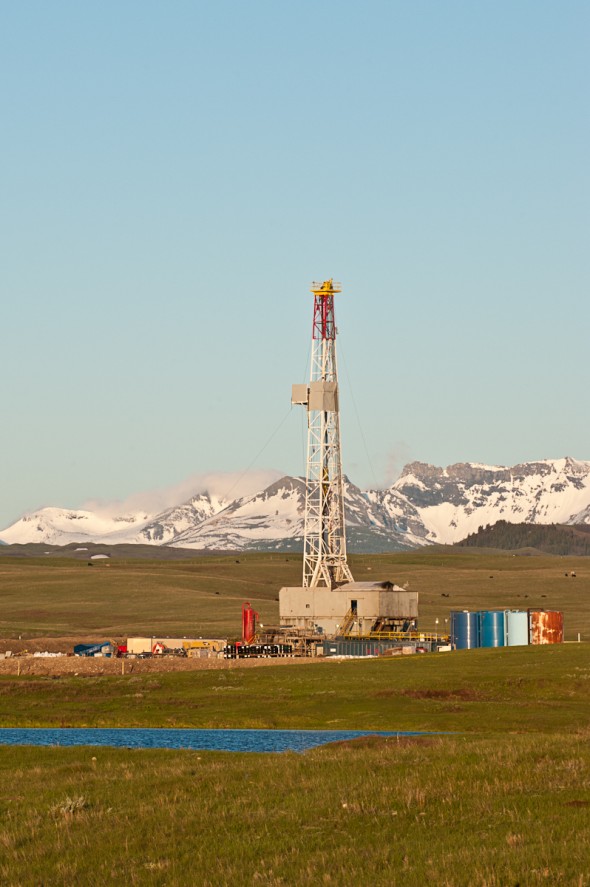
Introduction, Setting and Scope The eastern front of the northern rocky mountains in Montana and southern Alberta occupies the interface where grizzly bears still freely move back and forth between the mountains and the prairie, is on the brink of massive change, particularly along Glacier National Parks east side. An interactive map of the current oil drilling on the Blackfeet Indian Reservation will help orient you. The eastern side of the crown of the continent ecosystem starts at the sharp jagged peaks in Glacier National Park, Waterton National Park in Alberta, CA, and the Rocky Mountain Front of Montana, where water flows to three oceans and literally divides the east and west. This area was known to the Blackfeet People as the Backbone of the World. More recently it has come to be included in a larger region known today as the Crown of the Continent ecosystem. The geographic region of concern stretches about 150 miles north to south, and 100 miles east to west. It includes the Waterton-Glacier International Peace Park, the Rocky Mountain Front, the Blackfeet Indian Reservation, and southern Alberta, Canada.
The focus now is on the Blackfeet Indian Reservation simply because that is where all the activity is now occurring. The Blackfeet Reservation maintains a rich, rare, and relatively intact system of short grass prairie, and associated wildlife, along with the steep jagged mountain ecosystem of the Rocky Mountains. In addition to the prairie-mountain landscape, the Blackfeet Indian Reservation supports a unique Native American and mixed non-Indian culture that is sure to see change as the demand for energy increases, and the oil boom progresses.
The driving force for change is the global, relentless demand for energy. In many ways, this force is impacting every system on earth, not only biophysical systems but social as well. In some real ways, the industrial oil complex holds the keys to the fate of the planet and its inhabitants. The “oil-boom” has reached this land. The industrial oil complex is already solidly established on the Blackfeet Indian Reservation and in the lands to the north in southern Alberta, Canada. The Waterton-Glacier International Peace Park shares a common border with the Blackfeet Reservation.
Oil and gas infrastructure development and wind turbines around the Blackfeet Reservation, and in southern Alberta, are expanding rapidly. Development of both resources is expected to increase markedly though the coming years. Full build-out is expected to be hundreds of new oil wells and pump-jacks, acres of wind turbines and associated infrastructure consisting of hundreds of miles of new roads, work camps, and support facilities which may including new hotels, and associated structures. Estimates are that 100-700 wells will be drilled over the next few years (12 wells are complete already with many more scheduled). Changes to this area will be unprecedented. It is not possible to know in advance exactly how the changes will play out in this setting. Still, there are enough other “oil boom” cases to safely assume they will be dramatic.
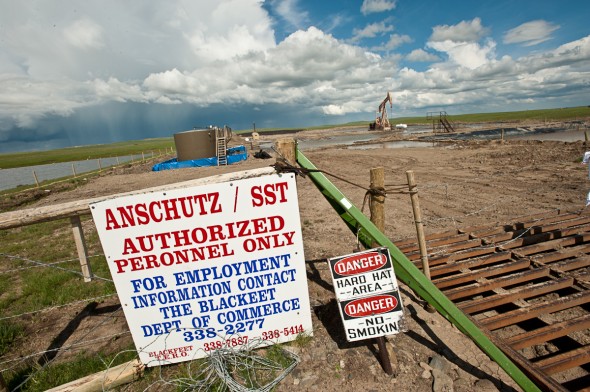
Importance of this project At this moment an opportunity exists to capture for educational and historical purposes, images of this mostly healthy, open and “intact” place. Today, we can still document the rapid transition of this cold, short grass prairie. There are progressively fewer such opportunities anywhere in the world. Such an opportunity not only is rare, it is perishable. All too commonly, journalists are in the position of creating the story after the fact, when the “good stuff is gone.” Here there is a rare opportunity to capture images of important landscapes and people before impacts occur. In this area, we still have a relatively intact mountain/prairie interface ecosystem that is home to grizzly and black bears, bull trout, Canada lynx, elk, deer, bighorn sheep, mountain goats and other elements all destined to change.
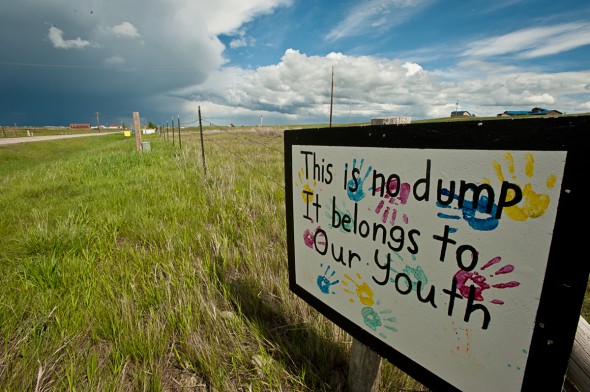
I want to emphasize that documenting current conditions on the Blackfeet Reservation and along the rocky mountain front today is a very high priority. Native American cultures, small towns, sensitive and endangered wildlife, open and un-tattered ecosystems are part of this complex puzzle and being altered at alarming rates.
The Local Aspect Small, rural communities in remote areas experience firsthand the most direct effects of commercial energy development. The Blackfeet have been on this particular landscape for at least 12,000 years. It now is a remote, mostly intact, relatively peaceful, Native American Reservation. It is the Blackfeet Nation. Now, that Nation appears to face a major energy boom and likely bust as the area changes to become an industrialized tapestry of roads, pump-jacks, evaporation ponds, cars, trucks, houses, stores and whatever else goes with it. At a minimum, it seems certain that once the fields are fully built-out, not only will the land not look the same, it’s people will never again behave the same. This project will document and share images of this landscape and its people before, during, and after the build-out of an intensive, high-cost, industrial energy system comprised of wind turbines, drill and “fracking rigs,” new roads and facilities, along with other associated activities and change. Already, some images of current conditions have been produced in anticipation of this larger project. They form the beginning of a vital baseline that must be established before the land and the people are dis-aggregated, the roads are constructed and the land, water, and wild grizzly bears become scarcer or worse, memories.
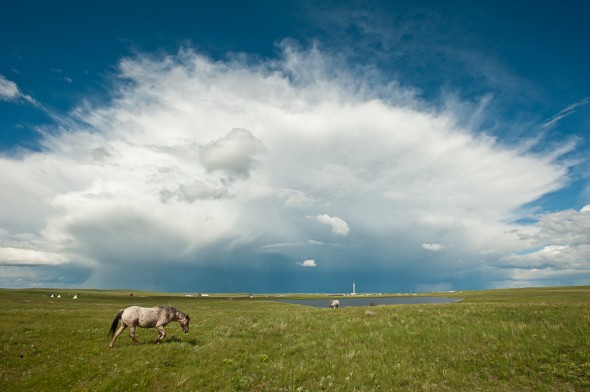 The anticipated time frame for my project is 2010-2020. Filming is already underway with about two years completed. The first images are of a relatively intact landscape followed by photos of “progress.” Drilling, drillers, the local economy and the social impacts over the lifetime of the project will follow. The photographs will be used now to help educate people about this threatened region. At the same time, the project will build a digital archive for future generations who can better understand what the land looked like before and during the period of disturbance. Both digital and print images will be created and widely shared with organizations and the public though online media, social networks, web blogs, and personal presentations. Once the road’s are in, the well pads created, the drill rigs erected, ponds dug, the power lines strung and the turbines begin churning, the current largely unobstructed landscape will be a memory. Memories are all that is left when you no longer can see something in person. Images sharpen and stimulate memories. Images are likely to persist through longer spans of time and are more dependable than memories.
The anticipated time frame for my project is 2010-2020. Filming is already underway with about two years completed. The first images are of a relatively intact landscape followed by photos of “progress.” Drilling, drillers, the local economy and the social impacts over the lifetime of the project will follow. The photographs will be used now to help educate people about this threatened region. At the same time, the project will build a digital archive for future generations who can better understand what the land looked like before and during the period of disturbance. Both digital and print images will be created and widely shared with organizations and the public though online media, social networks, web blogs, and personal presentations. Once the road’s are in, the well pads created, the drill rigs erected, ponds dug, the power lines strung and the turbines begin churning, the current largely unobstructed landscape will be a memory. Memories are all that is left when you no longer can see something in person. Images sharpen and stimulate memories. Images are likely to persist through longer spans of time and are more dependable than memories.
To document the entire build out over the coming years I plan to photograph the story from both the land and the air, and with both stills and video. I will follow and record a few specific people as well. I'll shoot and post/publish regularly in order to generate and maintain interest. The campaign will be driven both online and in person. As is so effective today, social media: for examples, Twitter, Facebook, Linkedin, will be an important vehicles. I will employ my personal network along with the much larger network of the people and conservation organizations who care about this place and project - basically everyone who pays attention to natural ecosystems, and likes cowboys, Indians, wildlife, and glaciers.
Cost of this project for year one and two is estimated to be $40,000. The costs include expenses for local travel, fixed wing airplane rental, assistance in the field and office when necessary (mainly web design and development, and continued costs for hosting and management), some special equipment including a ground based radio controlled aerial platform. The aerial platform will enable me to capture low level aerials that offer a better perspective of the relationship between the development and the landscape. It will also be more cost effective, and I can react to local weather conditions and shoot aerials without always the need for a fixed wing aircraft. The remainder will pay for time to capture, process, market and produce the project.
About Me
Education, Science and Business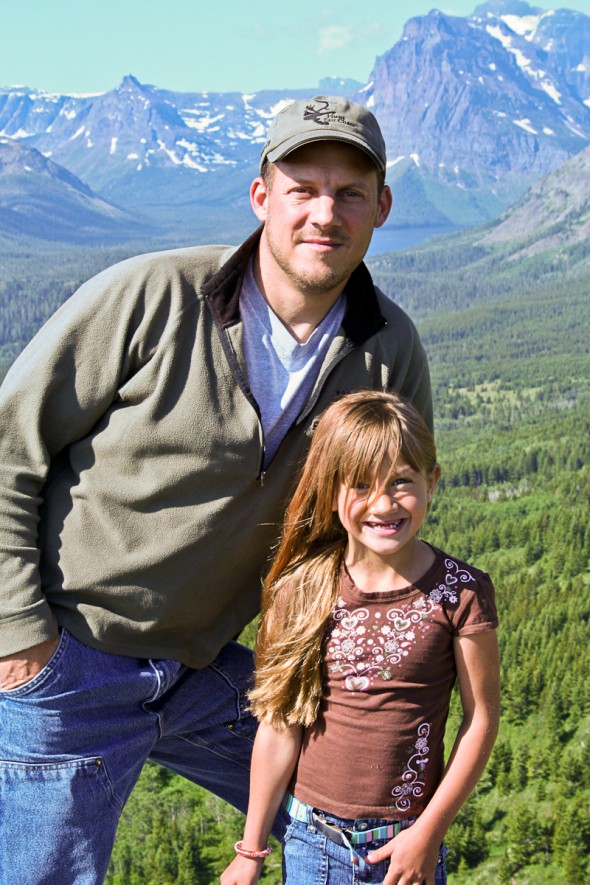 Tony lives in East Glacier Park, MT on the Blackfeet Indian Reservation with his 9 year old daughter. He has more than 20 years of professional and executive environmental management experience. He holds a Master's of Science in Resources Management degree, an undergraduate degree in Geography and Land Studies, and a minor in Environmental Studies from Central Washington University. Tony has managed more than 30 complex scientific research projects for the Environmental Protection Agency from coast to coast, he’s worked in the private sector and for Indian Tribes and non-profits. Over his 20 year professional science career he has participated in the development of countless environmental policies and/or regulations from the EPA, to the USFS, BLM, DoD, DOE, BOR, Washington State’s DOE Wetlands mitigation banking regulations, air and water quality plans, and more. Tony’s a board member of the professional outdoor media association, the East Glacier Park School Board, and a current member and former officer on the East Glacier Park Volunteer Fire Department and a principal member of the Glacier Two Medicine Alliance.
Tony lives in East Glacier Park, MT on the Blackfeet Indian Reservation with his 9 year old daughter. He has more than 20 years of professional and executive environmental management experience. He holds a Master's of Science in Resources Management degree, an undergraduate degree in Geography and Land Studies, and a minor in Environmental Studies from Central Washington University. Tony has managed more than 30 complex scientific research projects for the Environmental Protection Agency from coast to coast, he’s worked in the private sector and for Indian Tribes and non-profits. Over his 20 year professional science career he has participated in the development of countless environmental policies and/or regulations from the EPA, to the USFS, BLM, DoD, DOE, BOR, Washington State’s DOE Wetlands mitigation banking regulations, air and water quality plans, and more. Tony’s a board member of the professional outdoor media association, the East Glacier Park School Board, and a current member and former officer on the East Glacier Park Volunteer Fire Department and a principal member of the Glacier Two Medicine Alliance.
Tony owns Tony Bynum Photography & Glacier Impressions Gallery. In 2004 Interior Secretary Gail Norton appointed Tony to the Montana Resources Advisory Council (federal advisory committee, member 2 years, chairman 1). During that time, from 2005 until early 2010 he also managed complex scientific research projects at Portage, a private consulting firm. From 1999 to 2001 he was a special assistant and the acting Senior Indian Program Manager at EPA in Washington, D.C., responsible for a $2 Million budget, implementing federal statutes, strategic planning, GPRA reporting, and federal rule making. In 1997 and 98 he was the co-chair of the technical oversight committee of the Western Regional Air Partnership.
Bynum’s images have appeared on the covers and in copy of many of the countries major traditional outdoor recreation focused magazines, including Field & Stream, Outdoor Life, Sports Afield, Fair Chase, Texas Sporting Journal, Eastman’s Hunting, and Eastmans Bow hunting, Bugle, Bowhunt America, Montana Outdoors, Montana Magazine, Western Hunter, Western Horseman, and many more. Tony recently became the photo editor for Elk Hunter Magazine and In 2010 he was selected to produce commercial advertising images for the State Of Montana’s Office of Tourism. His images are currently display on buses, trains, billboards, windows, skylights, and elevator doors from Chicago to Seattle, WA.
His list of publication credits is extensive including other industry publications like, National Geographic, the NewYorker, The Food Network Magazine, Popular Photography, Digital Photographer (UK), Delta Sky, Empire Builder and many, many more (complete list between 2009-2011).
Tony’s often hired to produce unique, compelling, thoughtful images to compliment editorial writing in magazines and books. He has worked or traveled to all of the lower 48 states, Mexico, and much of Canada, and writes regularly for his blog. He’s active on Twitter, Facebook, Linkedin, Behance, and moderates and edits photography, outdoor activities and hunting forums on several very popular websites.
Current Interests and Positions 1. conservation photography and the Rocky Mountain Front 2. board member of the Professional Outdoor Media Association 3. board member of the East Glacier Park School District 4. member and past training officer on the East Glacier Park Volunteer Fire Department 5. principal member of the Glacier Two-Medicine Alliance. 6. Author of the blog, www.glacierparkphotographer.com 7. regularly consults with the TWS, the Montana Wilderness Associating, the Montana Wildlife Association, the Coalition to Protect the Rocky Mountain Front, and many other state and national conservation and resource management organizations/groups.
Personal Commitment Central to Tony’s lifestyle is giving something back. As a young man he decided that giving was an essential part of his core belief. To him, giving is a lifestyle choice; it’s more than a duty. There are few things more rewarding or more valuable than offering yourself up to help others. If his entire life were mapped topographically, the ridges would represent the edges of his experience, while the blue line in the valley bottom would signify his giving; it’s central to his life and like the river at the bottom of the valley, all things run though it.
Tony has a unique, and truly authentic set of real-time, current and tested skills in business, management, governance, science, writing, communications, technology, social leadership and teaching. He’s a trained facilitator and has served on three boards where consensus was the agreed processes for decision making. He’s an educator, a leader by nature, a father, and a great friend.
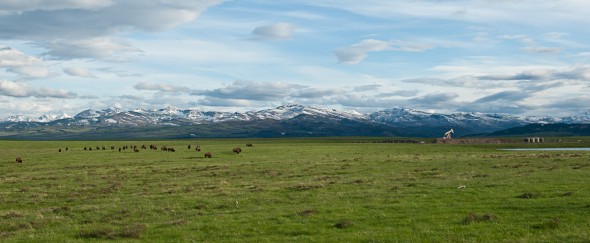
"In the end we will conserve only what we love. We love only what we understand."
- Baba Dioum
A Blackfeet Oil Drilling Press Kit containing project information and photographs to accompany your story is available.







